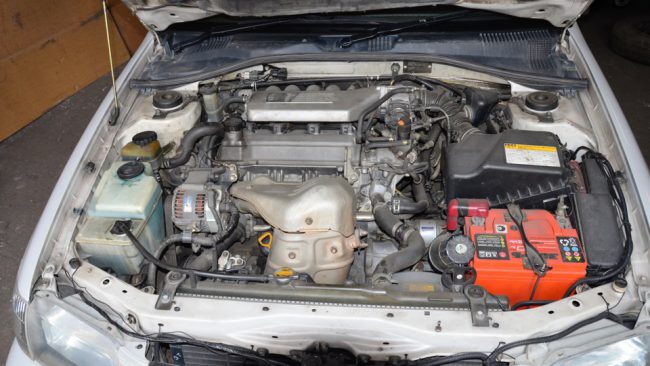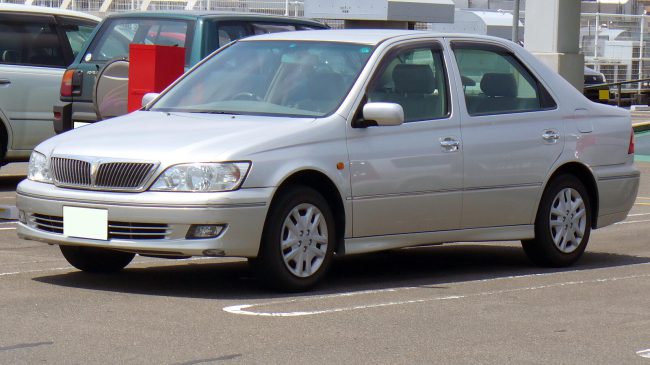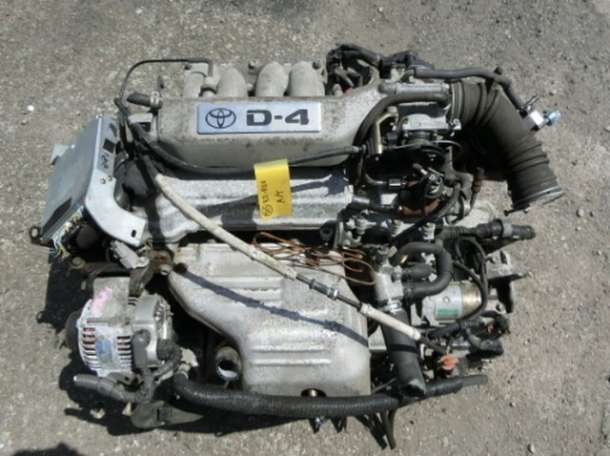
Toyota 3S-FSE engine
Content
The Toyota 3S-FSE engine turned out to be one of the most technologically advanced at the time of its release. This is the first unit on which the Japanese corporation tested D4 direct fuel injection and created a whole new direction in the construction of automotive engines. But manufacturability turned out to be a double-edged sword, so FSE received thousands of negative and even angry reviews from owners.

For many motorists, an attempt to do it yourself is a bit bewildering. Even removing the pan to change the oil in the engine is extremely difficult due to the specific fasteners. The motor began to be produced in 1997. This is the time when Toyota began to actively turn the art of automotive into a good business.
Main technical characteristics of the 3S-FSE motor
The engine was developed on the basis of the 3S-FE, a simpler and more unpretentious unit. But the number of changes in the new version turned out to be quite large. The Japanese sparkled with their understanding of manufacturability and installed almost everything that could be called modern in the new development. However, in the characteristics you can find certain shortcomings.
Here are the main parameters of the engine:
| Working volume | 2.0 l |
| Engine power | 145 h.p. at 6000 rpm |
| Torque | 171-198 N*m at 4400 rpm |
| Cylinder block | cast-iron |
| Block head | aluminum |
| Number of cylinders | 4 |
| Number of valves | 16 |
| Bore | 86 mm |
| Piston stroke | 86 mm |
| Fuel injection | immediate D4 |
| fuel type | 95 gasoline |
| Fuel consumption: | |
| – urban cycle | 10 l / 100 km |
| - suburban cycle | 6.5 l / 100 km |
| Timing system drive | belt |
On the one hand, this unit has an excellent origin and a successful pedigree. But it does not at all guarantee reliability in operation after 250 km. This is a very small resource for engines of this category, and even Toyota production. It is at this point that the problems begin.
However, major repairs can be carried out, the cast-iron block is not disposable. And for this year of production, this fact already causes pleasant emotions.
They installed this engine on Toyota Corona Premio (1997-2001), Toyota Nadia (1998-2001), Toyota Vista (1998-2001), Toyota Vista Ardeo (2000-2001).

Advantages of the 3S-FSE engine - what are the advantages?
The timing belt is replaced once every 1-90 thousand kilometers. This is the standard version, there is a practical and simple belt here, there are no problems specific to the chain. Labels are set according to the manual, you do not need to invent anything. The ignition coil is taken from an FE donor, it is simple and works for a long time without any problems.
This power unit has several important systems at its disposal:
- a good generator and, in general, good attachments that do not cause problems in operation;
- serviceable timing system - it is enough to cock the tension roller to extend the life of the belt even more;
- simple design - at the station they can check the engine manually or read error codes from a computer diagnostic system;
- reliable piston group, which is known for the absence of problems even under heavy loads;
- well-chosen battery characteristics, it is enough to follow the manufacturer's factory recommendations.

That is, the motor cannot be called poor-quality and unreliable, given its advantages. During operation, drivers also note low fuel consumption, if you do not put too much pressure on the trigger. The location of the main service nodes is also pleasing. They are quite easy to get to, which somewhat reduces the cost and service life during regular maintenance. But repairing in the garage on your own will not be easy.
Cons and disadvantages of FSE - the main problems
The 3S series is known for its lack of serious childhood problems, but the FSE model stood out from its brothers in concern. The problem is that Toyota specialists decided to install all the developments that were relevant at that time for efficiency and environmental friendliness on this power plant. As a result, there are a number of problems that cannot be solved in any way during the use of the engine. Here are just a few of the popular problems:
- The fuel system, as well as candles, need constant maintenance; nozzles have to be cleaned almost constantly.
- The EGR valve is a terrible innovation, it clogs all the time. The best solution would be to blank off the EGR and remove it from the exhaust system.
- Floating turnovers. This inevitably happens with motors, as the variable intake manifold loses its elasticity at some point.
- All sensors and electronic parts fail. On age units, the problem of the electrical part turns out to be colossal.
- Engine won't start cold or won't start hot. It is worth sorting out the fuel rail, clean the injectors, USR, look at the candles.
- The pump is out of order. The pump needs to be replaced along with the timing system parts, which makes it very expensive to repair.
If you want to know if the valves on the 3S-FSE are bent, it's best not to check it in practice. The motor does not just bend the valves when the timing breaks, the entire cylinder head after such an event is repaired. And the cost of such a restoration would be prohibitively high. Often in the cold it happens that the engine does not catch the ignition. Replacing the spark plugs may solve the problem, but it's also worth checking the coil and other electrical ignition parts.
3S-FSE Repair and Maintenance Highlights
In repair, it is worth considering the complexity of ecological systems. In most cases, it is more cost effective to disable and remove them than to repair and clean them. A set of seals, such as a cylinder block gasket, is worth buying before capital. Give preference to the most expensive original solutions.

It is better to trust the work to professionals. An incorrect cylinder head tightening torque, for example, will lead to the destruction of the valve system, contribute to the rapid failure of the piston group, and increased wear.
Monitor the operation of all sensors, special attention to the camshaft sensor, automation in the radiator and the entire cooling system. Proper throttle setting can also be tricky.
How to tune this motor?
It does not make any economic or practical sense to increase the power of the 3S-FSE model. Complex factory systems such as rpm cycling, for example, will not work. Stock electronics will not cope with the tasks, the block and cylinder head will also need to be improved. So installing a compressor is unwise.
Also, do not think about chip tuning. The motor is old, the growth of its power will end with a major overhaul. Many owners complain that after chip tuning, the engine rattles, factory clearances change, and wear of metal parts increases.
A reasonable tuning option is a banal swap on a 3S-GT or a similar option. With the help of complex modifications, you can get up to 350-400 horsepower without a noticeable loss of resource.
Conclusions about the power plant 3S-FSE
This unit is full of surprises, including not the most pleasant moments. That is why it is impossible to call it ideal and optimal in all respects. The engine is theoretically simple, but a lot of environmental add-ons, such as EGR, gave incredibly poor results in the operation of the unit.
The owner may be pleased with the fuel consumption, but it also depends very much on the manner of driving, on the weight of the car, on age and wear.
Already before the capital, the engine begins to eat oil, consume 50% more fuel and show the owner with sound that now is the time to prepare for repairs. True, many people prefer a swap for a contracted Japanese motor to a repair, and this is often cheaper than capital.

